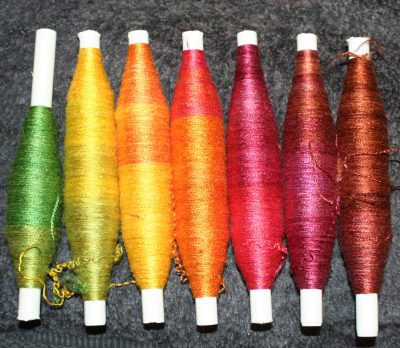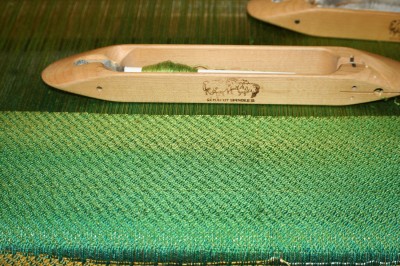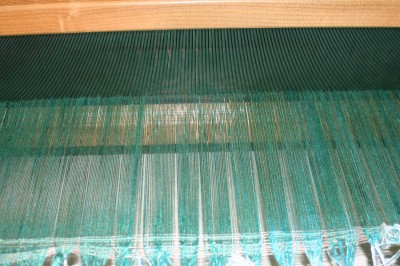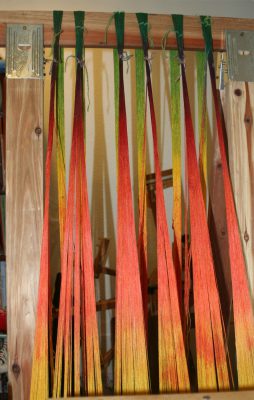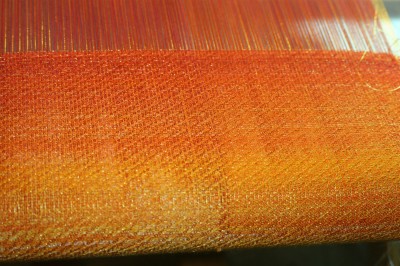I finished the first sample panel:
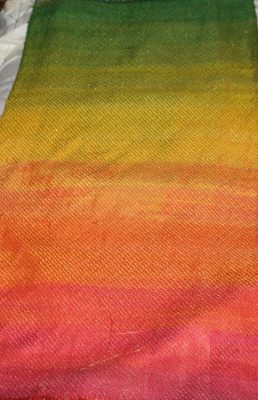
My conclusions:
- I do need to mingle the bouts near the edges, as some striping is evident where the bouts got out of sync. This is most obvious in the left-hand side of the yellow section, but is also visible in the lower right of the red section. It’s much more obvious in person.
- I need to fix some tension issues. The warp was much looser on the side bouts than in the center, resulting in much more take-up – about 4″ over the first 24″ – which meant the bouts got out of sync. I have some ideas of what is wrong and will take steps to fix it in the next set of samples.
- I need to make the transitions between colors more gradual in the knitted blank. There’s some pretty pronounced striping where the color changes happened too fast.
- I’m not sure I like the effect of switching to the silk. The fabric is heavier (at 7000 ypp, it’s nearly 20% heavier than the tencel) and as a result, does not drape as well. Shorter floats may contribute to the effect.
- And – and this is the kicker – I don’t like the colors. They’re too bright; they make me think of summer flowers, not autumn leaves. Compare it to the original sample in tencel:
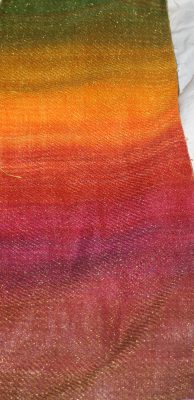
At this point I am not quite sure what to do next. Do I continue on in silk, or switch back to tencel? Do I try a sample in 60/2 silk (for a lighter fabric), using the old color set? I am baffled by the options. I am going to take a day or two to meditate on this, and meanwhile work on my Handwoven article. But I have the feeling I will go back to the tencel, and weave (yet another) sample, in the original colors, this time at full width.
